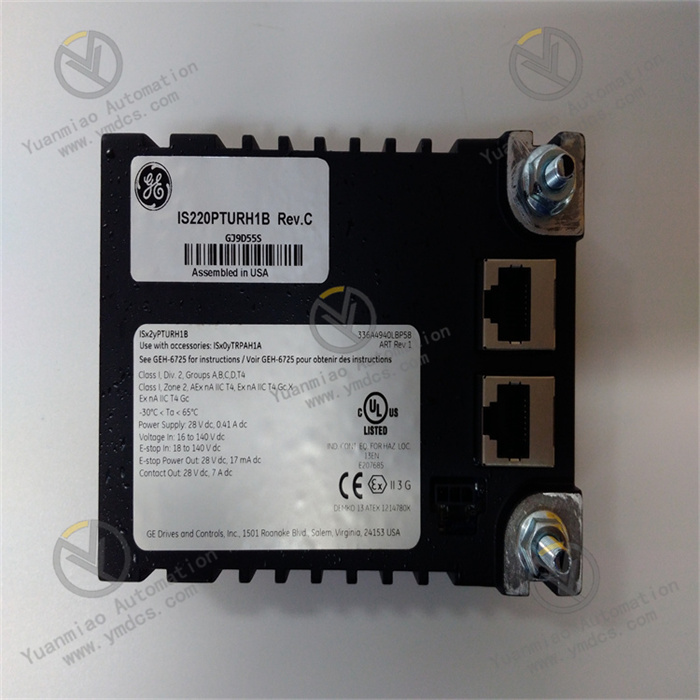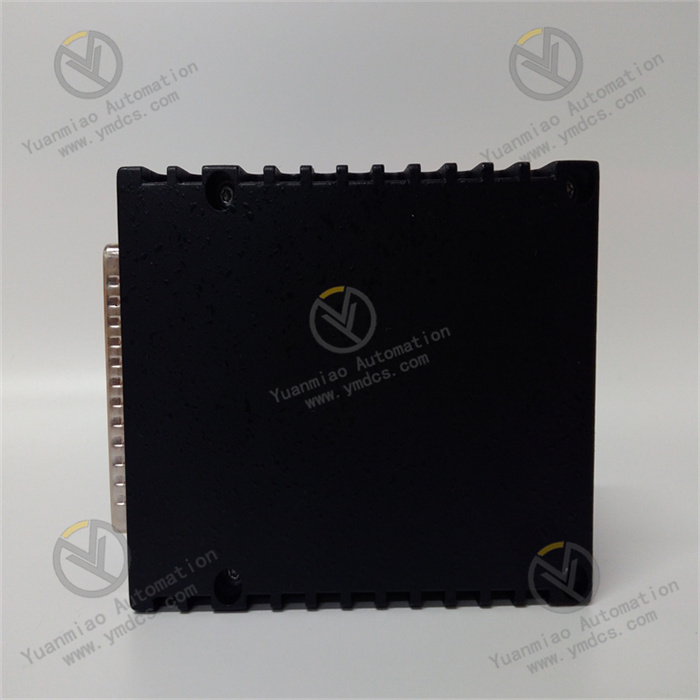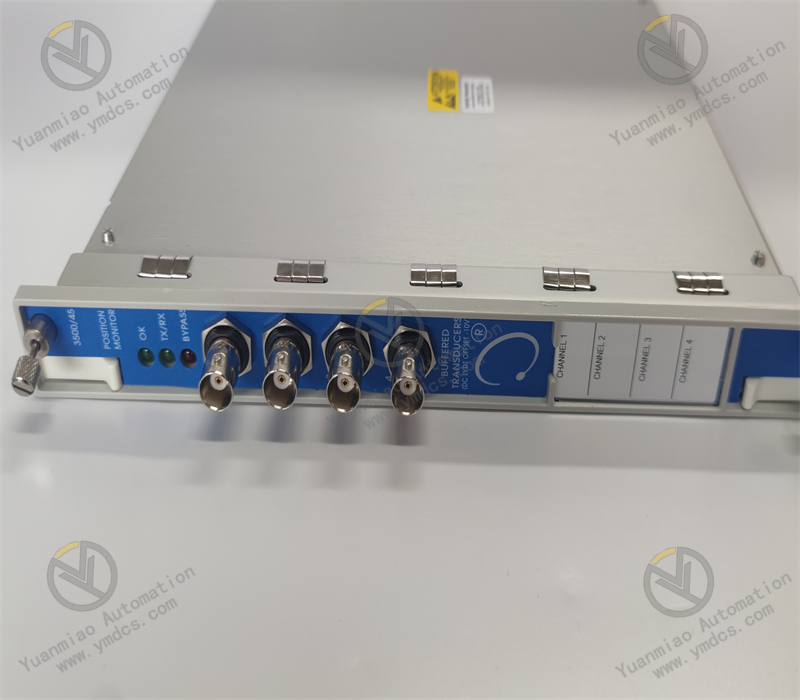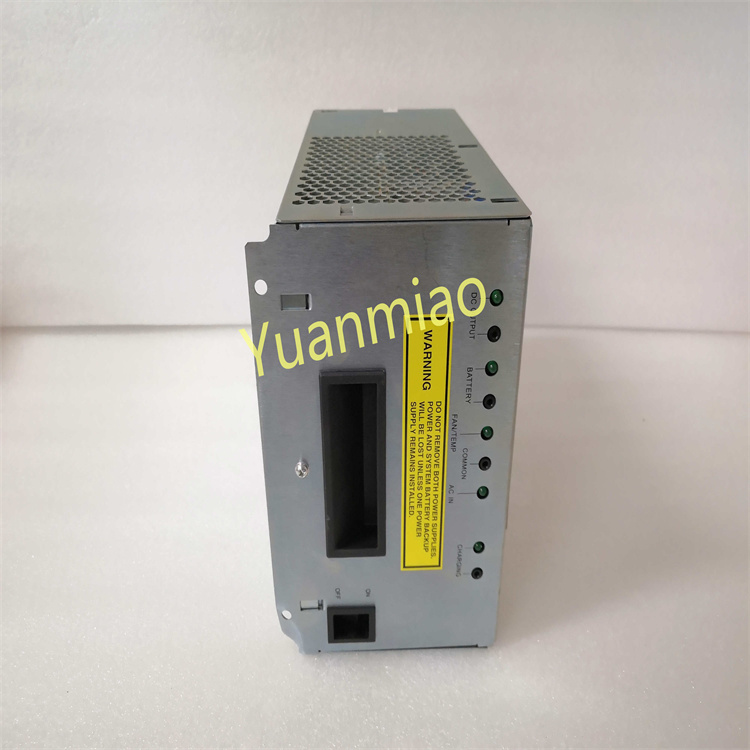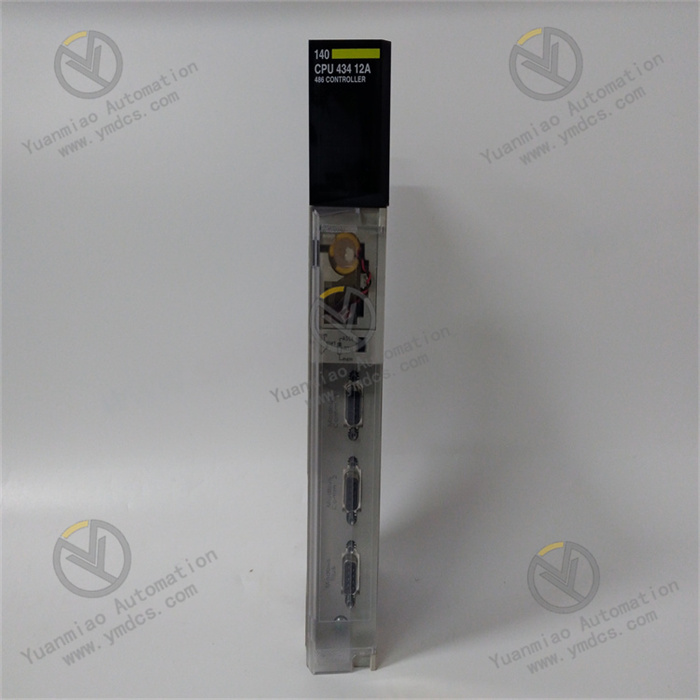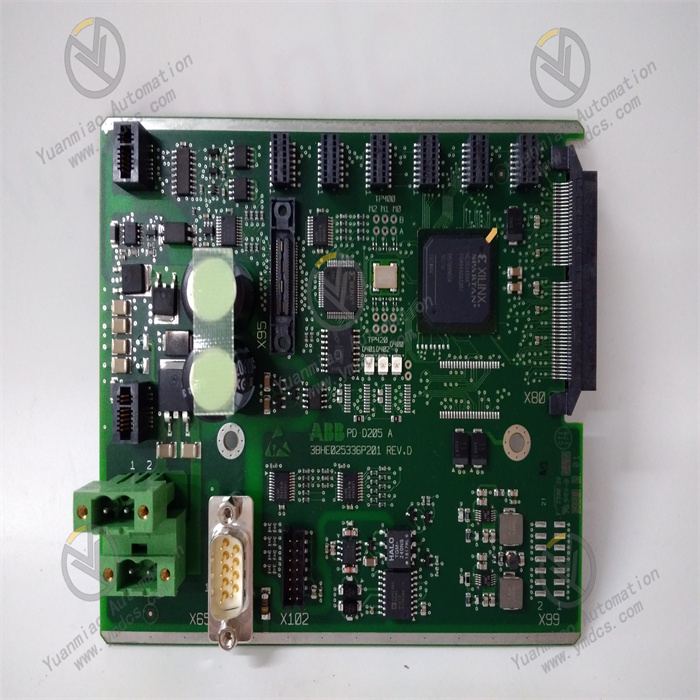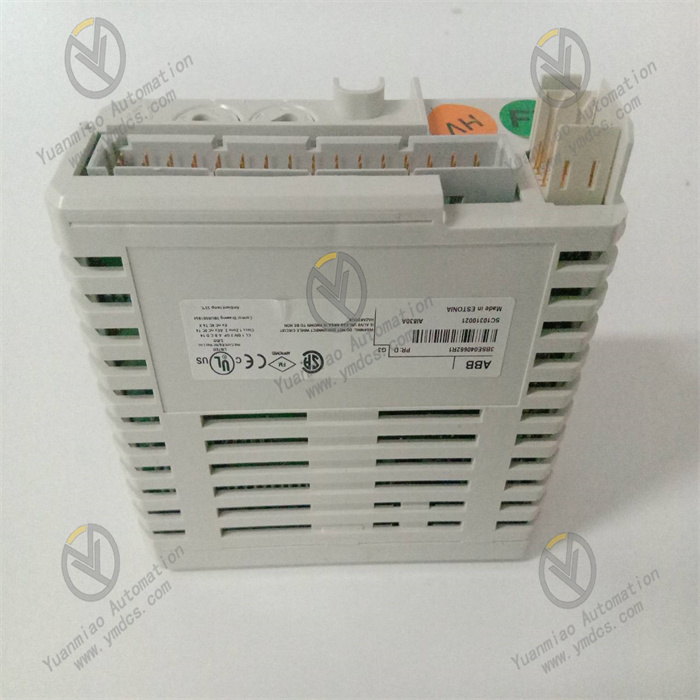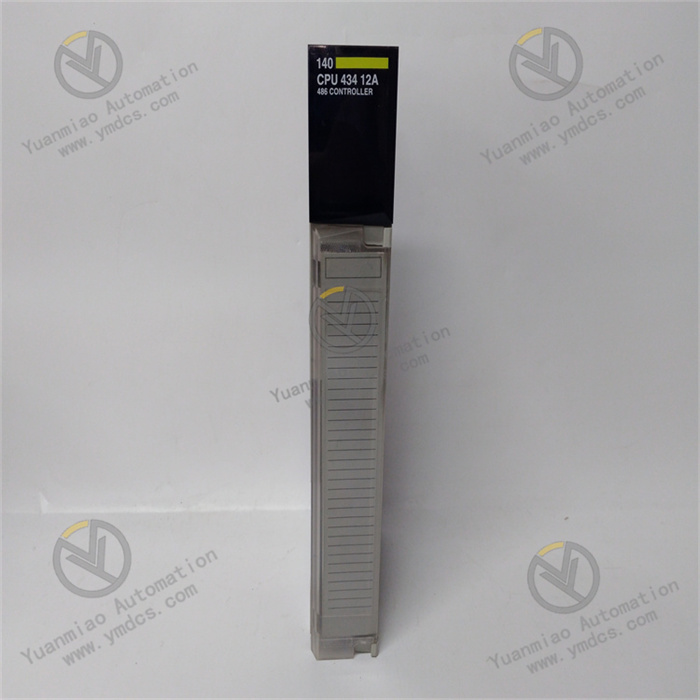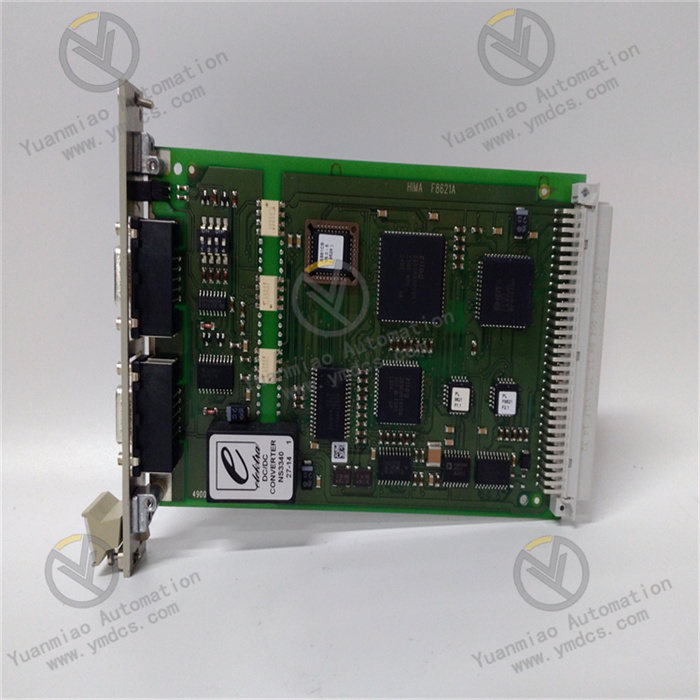Description
GE IS220PTURH1B
GE IS220PTURH1B is a multi-parameter monitoring and control module specifically designed by General Electric (GE) for the Mark VI and Mark VIe turbine control systems. Its core positioning is to address the key requirements of large-scale turbine equipment (such as gas turbines, steam turbines, and industrial turbines) for "integrated monitoring of multiple parameters including speed/pressure/temperature, interlock control for key parameter over-limit, data reliability under complex working conditions, and intelligent fault early warning". Within the industrial automation system, this module not only undertakes the accurate collection and processing of core parameters of turbines (such as turbine speed, bearing pressure, and exhaust temperature) but also possesses the capability of rapid interlock control when parameters exceed limits. It provides an integrated solution of "multi-parameter monitoring + safety control + fault early warning" for turbine equipment in industries like electric power, petrochemicals, and metallurgy (e.g., gas turbine generator sets above 100MW, turbines in catalytic cracking units of petrochemical plants, and turbines in blast furnace blowers of iron and steel plants). Compliant with the API 670 turbine monitoring standard and IEC 61508 SIL 2 safety level, it reduces the risk of turbine equipment damage caused by delayed parameter monitoring or control lag.
GE IS220PTURH1B monitors the gas turbine speed (accuracy: ±1r/min), bearing oil supply pressure (accuracy: ±0.01MPa), and exhaust temperature (accuracy: ±1℃) in real time. When the speed exceeds the generator's synchronous speed by ±50r/min due to power grid load fluctuations, the module triggers the interlock adjustment of the speed control valve within 0.3 seconds, avoiding unit tripping caused by speed instability (a single trip results in losses exceeding 500,000 yuan). In the steam turbine system of a catalytic cracking unit in a petrochemical plant, the module monitors the turbine inlet steam pressure (range: 0-10MPa) and vibration value. It warns of steam pipeline abnormalities 20 days in advance through the pressure fluctuation trend (fluctuation range increased from ±0.05MPa to ±0.2MPa). Maintenance personnel promptly check and clear pipeline blockages, preventing turbine shutdown caused by sudden pressure drop (a single shutdown results in losses exceeding 3 million yuan). In the turbine system of a blast furnace blower in an iron and steel plant, IS220PTURH1B operates stably in an alternating high and low temperature environment of -10℃~70℃, with a Mean Time Between Failures (MTBF) of ≥550,000 hours, meeting the high reliability requirements of the turbine equipment for 24/7 continuous oxygen supply to the blast furnace.
GE IS220PTURH1B adopts an industrial-grade reinforced modular architecture, with dimensions of 120mm×80mm×40mm. It is compatible with the standard 3U rack (19-inch rack installation) of the GE Mark VI/Mark VIe system and supports parallel expansion of multiple modules (maximum 16 modules per rack), satisfying the multi-measurement point monitoring needs of large turbines. Its core adopts a hybrid channel architecture of "8 analog inputs + 4 digital inputs/outputs + 2 speed signal inputs". Each analog channel is equipped with a 24-bit AD converter, supporting the input of multiple types of signals such as speed (magnetoelectric/photoelectric sensors), pressure (4-20mA transmitters), and temperature (RTD/thermocouples). The shell is made of UL94 V-0 grade flame-retardant alloy material, with a built-in electromagnetic shielding layer and dust-proof sealing strips, achieving an IP20 protection level to enhance electromagnetic interference and dust protection in industrial sites. The operating temperature range is -10℃~70℃, the relative humidity is 5%~95% (no condensation), and the storage temperature range is -40℃~85℃. Internally, it adopts a "channel-level independent isolation + power filtering" design. The isolation voltage between the analog channel and the backplane bus is ≥2kVrms, and the ESD protection of the digital channel is ±15kV (air discharge), effectively resisting electromagnetic interference generated by high-voltage frequency converters and large motor startups. It is compatible with the GE Control System Toolbox programming software, supports seamless connection with the Mark VIe controller via the PROFINET bus, and enables online configuration and fault diagnosis, reducing the difficulty of system integration.
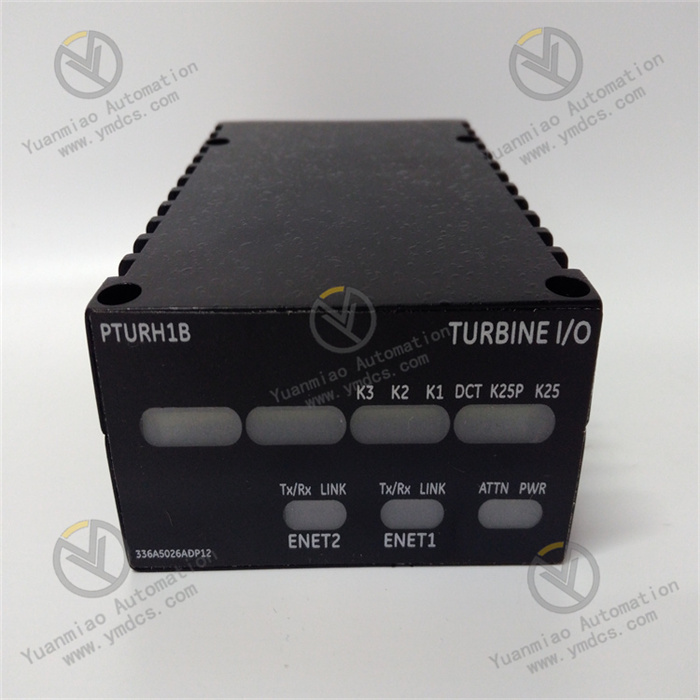
With "integrated multi-parameter monitoring" as its core, IS220PTURH1B meets the full-dimensional parameter monitoring needs of turbine equipment through hybrid channel design and high-resolution processing:
- Multi-signal type compatibility: The 8 AI channels can simultaneously collect pressure (4-20mA) and temperature (RTD/thermocouple) signals; the 2 speed channels are compatible with magnetoelectric/photoelectric sensors; and the 4 DI/DO channels monitor valve status and perform interlock control. In a gas turbine system, the module collects bearing temperatures (Pt100) via 4 AI channels, oil supply pressure (4-20mA) via 2 AI channels, and rotor speed via 2 speed channels, realizing the coordinated monitoring of "temperature-pressure-speed". It covers the core parameters of the turbine without the need for additional modules.
- High-precision speed measurement: With a range of 0-60000r/min and an accuracy of ±0.1% FS, it can capture tiny fluctuations in turbine speed (e.g., ±1r/min). In a steam turbine generator set, when the speed drops from 3000r/min to 2998r/min due to power grid frequency fluctuations, the module immediately detects this and triggers the adjustment of the speed control valve, avoiding power generation frequency deviation caused by speed instability.
- High-fidelity temperature measurement: With an accuracy of ±0.1℃ for RTD and ±1℃ for thermocouples, combined with automatic cold junction compensation technology, it accurately reflects the tiny change in exhaust temperature from 450℃ to 455℃ in the exhaust temperature monitoring of a chemical turbine, providing accurate data support for turbine efficiency analysis.
Targeting the characteristic of turbines that "parameter over-limit equals risk", the module achieves upgraded safety protection through multi-level interlock and early warning mechanisms:
- Three-level interlock control: Supports three-level responses, namely early warning (parameter approaching the threshold), alarm (parameter exceeding the threshold), and emergency shutdown (parameter seriously exceeding the threshold). In the turbine of a blast furnace blower, when the bearing temperature early warning value is set to 80℃, the alarm value to 85℃, and the shutdown value to 90℃, an audible and visual early warning is triggered when the temperature rises to 80℃, part of the load is cut off when it reaches 85℃, and an emergency shutdown is initiated when it hits 90℃, preventing bearing burnout.
- Millisecond-level interlock response: With an interlock response time of ≤300μs and combined with hardware-level interlock circuits, in the case of overspeed of a gas turbine (speed exceeding the shutdown value of 3300r/min), the module triggers the shutdown interlock within 0.2ms and cuts off the fuel supply, avoiding rotor overspeed accidents (a single accident results in losses exceeding 10 million yuan).
- Trend analysis and early warning: It automatically stores historical parameter data and generates trend curves, and predicts faults through slope analysis. In a turbine system, the module detected that the oil supply pressure dropped by 0.02MPa every week, predicted an oil pipe leak, and arranged maintenance 15 days in advance, preventing shutdown caused by sudden pressure drop.
Aiming at the harsh working conditions of "wide temperature range, strong electromagnetic interference, and high dust levels" in industrial sites, the module ensures stable operation through reinforced hardware design:
- Wide temperature adaptation and low-temperature startup optimization: With an operating temperature range of -10℃~70℃ and industrial-grade components (capacitors with a temperature resistance of -55℃~125℃), the module starts up within ≤3s in the outdoor turbine control cabinet in northern winters (-10℃) without parameter drift. In high-temperature workshops in southern summers (70℃), the internal temperature is 10℃ lower than the ambient temperature through optimized PCB heat dissipation paths, ensuring measurement accuracy.
- Strong electromagnetic interference protection: With 2kVrms channel isolation and ±15kV ESD protection, it resists electromagnetic interference generated by high-voltage frequency converters and large motors. In the turbine system of a rolling mill in an iron and steel plant, where there are 10kV high-voltage motors nearby, the signal-to-noise ratio of the speed signal collected by the module is ≥60dB without false fluctuations.
- Dust and corrosion protection: With an IP20 protection level and sealing strip design, no dust enters the internal circuit during 2 years of continuous operation in the turbine system of a cement plant (high dust concentration). The PCB adopts a conformal coating, which effectively resists salt spray corrosion in coastal power plants (high salt spray environment) and extends the module's service life.
Through user-friendly design and standardized tools, it reduces the difficulty and cost of operation and maintenance:
- Graphical configuration and online debugging: The Control System Toolbox software provides an intuitive interface, allowing drag-and-drop configuration of channel parameters and interlock logic, and automatically generates a test report after configuration. During the commissioning of a power plant, maintenance personnel completed the configuration of a single module within 30 minutes, which is a 50% efficiency improvement compared with traditional modules.
- Fault logging and status visualization: The module panel is equipped with LED indicators (for power, communication, fault, and interlock status), and combined with 1000 fault logs, maintenance personnel can quickly locate faults through the indicators and logs (e.g., a steady red AI light indicates an open channel), reducing troubleshooting time from 2 hours to 30 minutes.
- Remote monitoring and calibration: It supports remote reading of parameters and fault logs via the PROFINET bus. In cross-regional power plants, technical personnel at the headquarters can remotely monitor turbine parameters at different locations without on-site inspections. It also supports online calibration, which can be completed by inputting a standard signal source without disassembling the module.
![]()




